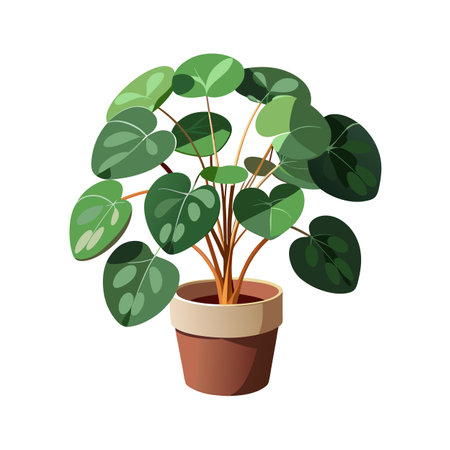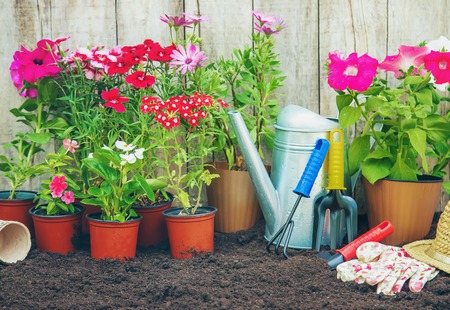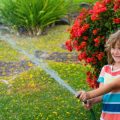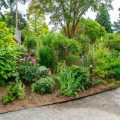1. Understanding Drought-Resistant Landscaping
Drought-resistant landscaping, also known as xeriscaping, is all about designing your yard to thrive with minimal water. This approach is especially helpful in arid and semi-arid regions across the U.S., like parts of California, Arizona, Nevada, and Texas. But even if you don’t live in a desert climate, water-wise landscaping can still save you money and support your local environment.
Why Choose Drought-Resistant Landscaping?
There are several great reasons to consider this style of landscaping for your home:
| Benefit | Description |
|---|---|
| Water Conservation | Drought-tolerant plants need far less water than traditional lawns or thirsty flowers. |
| Lower Utility Bills | Using less water means lower monthly water bills—great for your wallet! |
| Ecosystem Support | This type of landscaping encourages native wildlife like bees, butterflies, and birds. |
| Low Maintenance | No need to mow or fertilize constantly—these landscapes are built for easy care. |
The Basics of Water-Wise Yard Design
You don’t need to be a professional landscaper to start planning a drought-resistant yard. Here are some key principles to keep in mind:
- Choose Native Plants: These plants are already adapted to your region’s weather and soil conditions.
- Group by Water Needs: Place plants with similar watering requirements together to avoid overwatering.
- Add Mulch: Mulch helps retain soil moisture and keeps roots cool during hot days.
- Use Efficient Irrigation: Drip irrigation systems deliver water directly to plant roots with minimal waste.
Drought-Tolerant Plants to Consider
| Plant Name | Description |
|---|---|
| Lavender | A fragrant herb that loves sun and dry soil—perfect for borders and pollinators. |
| Sedum (Stonecrop) | A hardy succulent that adds texture and color with very little water. |
| Kangaroo Paw | An Australian native with unique blooms that attract hummingbirds. |
| Purple Coneflower (Echinacea) | Tough, beautiful perennials that tolerate heat and drought well. |
Drought-resistant landscaping is more than just a trend—it’s a smart way to make your outdoor space both beautiful and sustainable. As we explore more ideas in this series, you’ll see how easy it is to transform your yard into a water-wise haven.
2. Choosing the Right Low-Water Plants
When it comes to creating a drought-resistant landscape, selecting the right plants is one of the most important steps. Choosing species that naturally thrive in dry conditions helps you save water, reduce maintenance, and keep your yard looking beautiful year-round.
What Makes a Plant Drought-Resistant?
Drought-resistant plants are adapted to survive with minimal water. They typically have deep root systems, waxy or small leaves, and other features that help them retain moisture. Many are native to arid or semi-arid regions and are perfectly suited for American gardens, especially in dry climates like the Southwest or West Coast.
Top Drought-Tolerant Plant Categories
Here are some popular types of low-water plants that work well in many parts of the U.S.:
| Plant Type | Examples | Benefits |
|---|---|---|
| Succulents | Aloe Vera, Sedum, Agave | Store water in their leaves; great for borders and containers |
| Ornamental Grasses | Blue Fescue, Feather Reed Grass, Muhly Grass | Add texture and movement; low-maintenance and hardy |
| Native Wildflowers | Black-Eyed Susan, Coneflower, California Poppy | Support pollinators; seasonal color with minimal care |
| Drought-Tolerant Shrubs | Lavender, Sage (Salvia), Russian Sage | Fragrant and attractive; ideal for foundation planting |
| Ground Covers | Lantana, Ice Plant, Creeping Thyme | Reduce erosion; fill empty spaces with color and texture |
Selecting Native Plants by Region
One of the best ways to ensure success is to choose native plants that are already adapted to your local climate. Here’s a quick look at some examples by region:
| Region | Suggested Native Plants |
|---|---|
| Southwest (e.g., Arizona, New Mexico) | Agave, Desert Marigold, Red Yucca |
| West Coast (e.g., California) | California Lilac, Manzanita, Toyon |
| Southeast (e.g., Florida, Georgia) | Coneflower, Coreopsis, Beautyberry |
| Northeast (e.g., New York, Massachusetts) | Bee Balm, Joe-Pye Weed, Switchgrass |
| Midwest (e.g., Illinois, Kansas) | Purple Prairie Clover, Little Bluestem, Butterfly Milkweed |
| Pacific Northwest (e.g., Oregon, Washington) | Kinnikinnick, Oregon Grape, Sword Fern (for shaded areas) |
Tips for Planting Low-Water Gardens Successfully
- Group plants with similar water needs: This makes irrigation more efficient.
- Use mulch: Mulch helps retain soil moisture and suppress weeds.
- Water deeply but infrequently: Encourage deep root growth by watering thoroughly but less often.
- Avoid over-fertilizing: Many drought-tolerant plants prefer lean soil conditions.
Selecting the right drought-tolerant plants is all about knowing your local environment and choosing species that will thrive naturally. With the right mix of native flowers, grasses, succulents, and shrubs, you can enjoy a vibrant yard that conserves water and supports local wildlife.

3. Design Principles for a Water-Wise Yard
Creating a drought-resistant landscape doesn’t mean sacrificing beauty or function. With smart planning and the right techniques, you can build a yard that thrives in dry conditions while still looking lush and inviting. Here are some essential design principles to guide your journey toward a water-wise yard.
Hydrozoning: Group Plants by Water Needs
Hydrozoning is one of the most effective ways to conserve water in your landscape. This method involves grouping plants with similar water requirements together so you can water each zone efficiently without overwatering or underwatering any specific plant.
| Zone | Water Requirement | Examples of Suitable Plants |
|---|---|---|
| High | Frequent watering | Lawn areas, vegetable gardens, annual flowers |
| Moderate | Weekly watering | Lavender, rosemary, ornamental grasses |
| Low | Occasional watering | Sage, yucca, agave, native perennials |
This approach not only saves water but also simplifies maintenance and ensures that each plant thrives in its ideal environment.
Use Mulch to Retain Moisture and Suppress Weeds
A thick layer of mulch—such as bark chips, shredded leaves, or gravel—helps retain soil moisture by reducing evaporation. It also keeps weeds at bay and adds an attractive finished look to garden beds.
Benefits of Mulching:
- Keeps soil cool and moist during hot weather
- Adds organic matter as it breaks down (if using organic mulch)
- Cuts down on weed growth
- Lowers overall water usage
Aim for 2–4 inches of mulch around plants, keeping it a few inches away from the base of stems to prevent rot.
Irrigation: Efficient Systems That Save Water
An efficient irrigation system is key to maintaining a healthy drought-tolerant landscape. Drip irrigation and soaker hoses deliver water directly to the roots where its needed most, minimizing waste from evaporation or runoff. Consider installing a smart irrigation controller that adjusts watering schedules based on local weather data.
Irrigation Methods Comparison:
| Irrigation Type | Description | Water Efficiency |
|---|---|---|
| Drip Irrigation | Sends water directly to plant roots through emitters | High |
| Soaker Hose | Pores along the hose allow slow seepage into soil | Medium-High |
| Sprinklers (Overhead) | Covers large areas; prone to evaporation loss | Low-Medium |
Selecting the right irrigation method and timing your watering early in the morning or late evening can greatly improve efficiency and reduce water bills.
Create Visual Interest with Texture and Color
Drought-resistant landscapes dont have to be boring! Use a mix of textures—like spiky agave next to soft grasses—and include pops of color from flowering natives such as California poppies or red yucca. The contrast makes your yard visually appealing all year long.
You can also incorporate non-plant elements like boulders, gravel paths, or decorative pottery to enhance your design while reducing the need for water-hungry turf.
4. Hardscaping Ideas That Save Water
Hardscaping is one of the smartest ways to create a beautiful, drought-resistant yard. Unlike plants, hardscape elements don’t need water and can add long-lasting structure and style to your landscape. By incorporating features like gravel pathways, rock gardens, raised beds, and permeable pavers, you can significantly reduce your water usage while still maintaining an attractive outdoor space.
Gravel Pathways
Gravel paths are low-maintenance, affordable, and allow water to drain naturally into the soil. They’re perfect for creating walkways through your garden or connecting different areas of your yard without using thirsty grass or plants.
Rock Gardens
Rock gardens are not only visually appealing but also incredibly practical for dry climates. Use a mix of rocks, pebbles, and drought-tolerant plants like succulents or cacti to build a beautiful display that requires little to no irrigation.
Raised Beds
Raised beds help you control the soil quality and improve water efficiency. They’re great for growing vegetables or ornamental plants while using minimal water. Plus, they add height and dimension to flat landscapes.
Permeable Pavers
Unlike traditional concrete or asphalt, permeable pavers allow rainwater to seep into the ground instead of running off. This helps replenish groundwater and reduces the need for supplemental irrigation.
Comparison of Hardscape Features
| Feature | Water Usage | Main Benefit |
|---|---|---|
| Gravel Pathways | No water needed | Low maintenance & great drainage |
| Rock Gardens | Minimal water | Visual interest & drought-friendly |
| Raised Beds | Efficient use of water | Better soil control & productivity |
| Permeable Pavers | No watering needed | Improves drainage & eco-friendly |
With thoughtful planning, hardscaping can turn your yard into a stylish and sustainable retreat that thrives in dry conditions—all while saving water and reducing maintenance time.
5. Eco-Friendly Features and Smart Irrigation
Saving water doesn’t mean sacrificing a lush, green yard. By incorporating eco-friendly features and smart irrigation systems, you can keep your landscape thriving while being mindful of your water use. These tools not only help conserve water but also make your gardening routine easier and more efficient.
Rain Barrels: Harvest Nature’s Gift
Rain barrels collect and store rainwater from your roof, which you can later use to water your plants. This free resource helps cut down on your water bill and reduces runoff that can lead to erosion or pollution.
Benefits of Rain Barrels
| Benefit | Description |
|---|---|
| Water Savings | Use stored rainwater instead of tap water for landscaping needs. |
| Eco-Friendly | Lowers demand on municipal water supplies and prevents stormwater runoff. |
| Easy Installation | Most models attach directly to your downspout with minimal tools needed. |
Drip Irrigation Systems: Targeted Watering
A drip irrigation system delivers water directly to the base of plants, minimizing evaporation and runoff. This method is especially effective for drought-resistant gardens because it gives each plant just the right amount of moisture it needs.
Why Choose Drip Irrigation?
- Saves Water: Uses up to 50% less water than traditional sprinklers.
- Keeps Foliage Dry: Reduces plant disease by avoiding wet leaves.
- Easily Adjustable: Customize flow rates for different plant types.
Smart Controllers: High-Tech Hydration
Smart irrigation controllers take the guesswork out of watering by adjusting schedules based on weather conditions, soil moisture, and plant type. Many systems connect to Wi-Fi and can be managed through smartphone apps, making them super convenient for busy homeowners.
Main Features of Smart Irrigation Controllers
| Feature | Description |
|---|---|
| Weather-Based Adjustments | Cuts back watering during rainy periods or cool temperatures. |
| Zoning Capabilities | Create zones for different areas of your yard based on sun exposure or plant needs. |
| User-Friendly Apps | Easily control schedules and monitor usage from your phone. |
If youre looking to build a drought-resistant yard that still looks fantastic year-round, integrating eco-friendly features like rain barrels, drip irrigation, and smart controllers is a smart move. These upgrades are easy to install and offer big returns in water savings and plant health.


